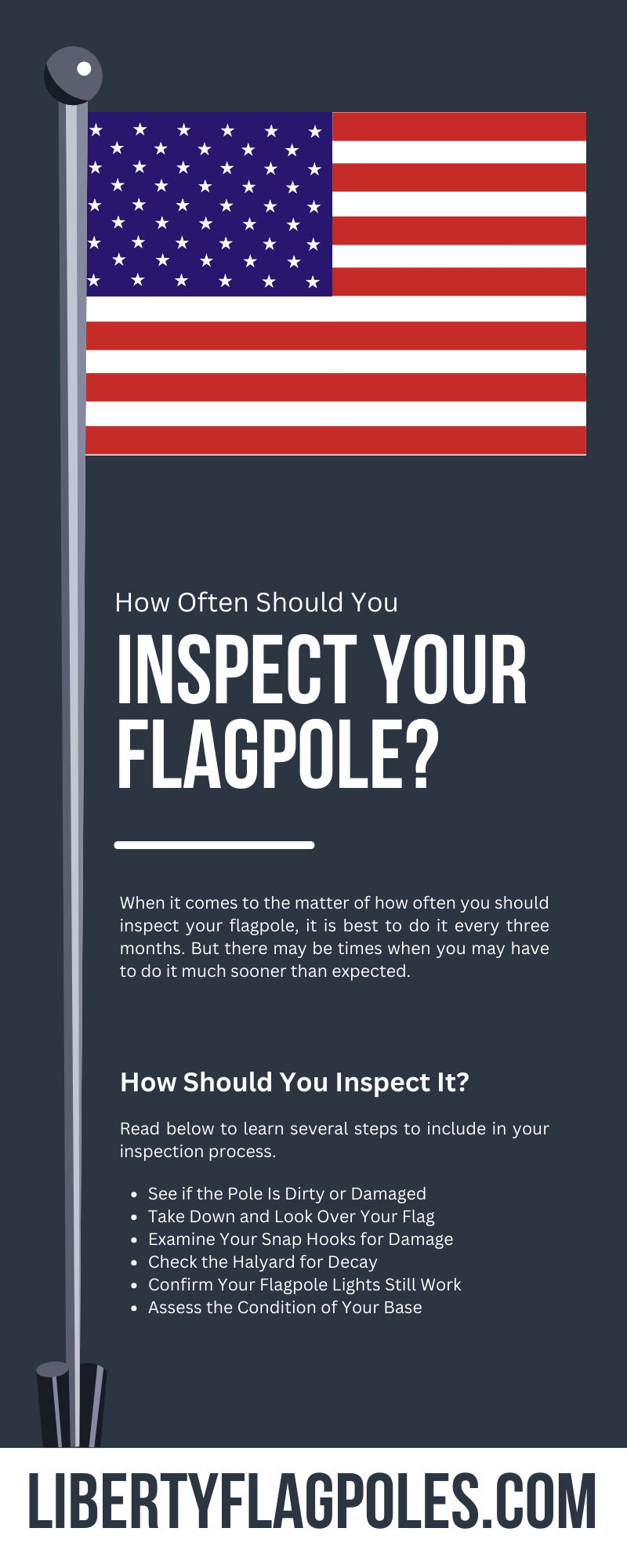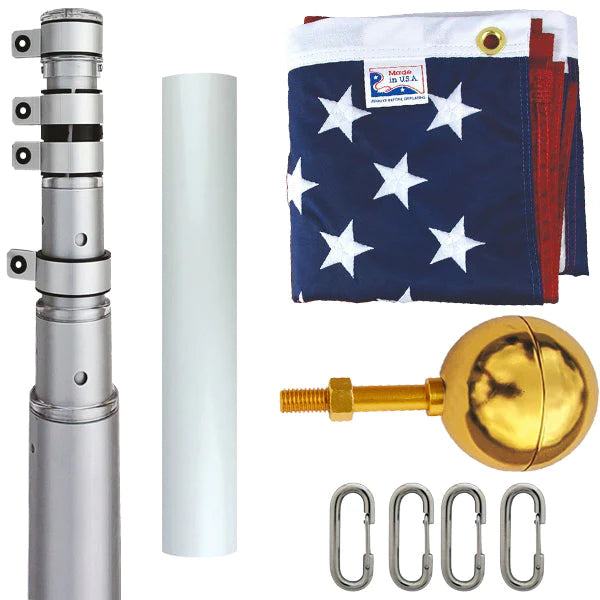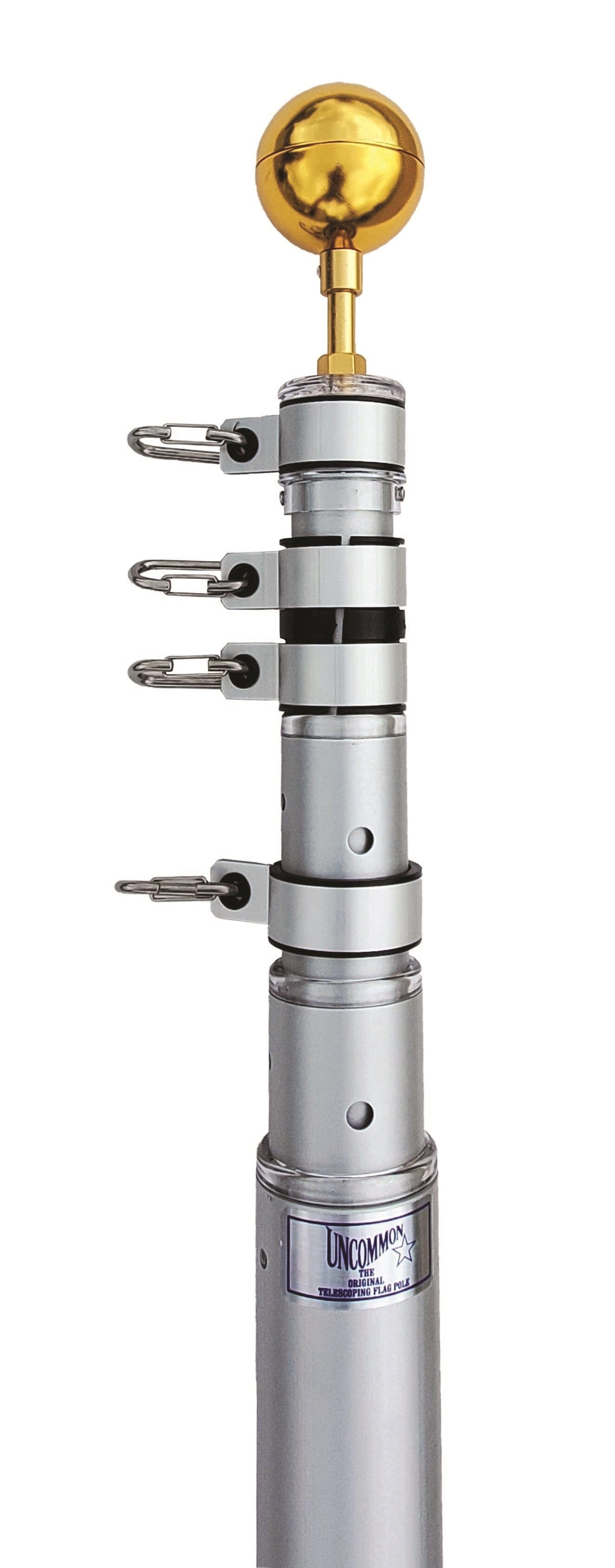When you hang a flag outside your home or business to show your pride or allegiance, you usually do it with the help of a flagpole. But just as it is important to take care of your flag, it is also important to provide your flagpole with the proper maintenance. Part of that process involves inspecting it. If you are unsure about how often you should inspect your flagpole, read on to find out the answer, as well as what you should do during the inspection process.
How Often Should You Inspect It?
When it comes to the matter of how often you should inspect your flagpole, it is best to do it every three months. But there may be times when you may have to do it much sooner than expected.
For example, if your region experiences harsh weather, it is best to perform an examination of your flagpole promptly after the adverse conditions have passed. This is because Mother Nature may have caused some unexpected harm or wear to your flagpole. By being proactive in conducting an examination, you can address immediate concerns, safeguard your flagpole’s reliability, and extend its service life.
How Should You Inspect It?
Now that you know how often you should inspect your flagpole, it is important to discuss how you should inspect it. A methodical approach to inspection is paramount since it can help you identify current issues promptly and resolve them before they worsen. Read below to learn several steps to include in your inspection process.
See if the Pole Is Dirty or Damaged
One obvious step in the inspection process is to look at the flagpole itself and see if it has any dirt or grime build-up that can leave unsightly marks. If it does, try washing your flagpole with a non-abrasive cleaner and soft equipment. This can help preserve your flagpole’s appearance.
Make sure not to scratch or damage the surface as you clean it, especially if it has a protective coating. This careful attention will ensure the flagpole remains a dignified and striking feature in your display.
In addition to keeping your pole clean, you should also examine it for any symptoms of material fatigue, such as cracking or unusual bending, which may compromise the flagpole's structural integrity. Early detection of fatigue is crucial if you want to successfully implement any corrective measures, which may include professional repair or even replacement of the affected sections. These can help prevent any failures that would lead to unsafe conditions.
Take Down and Look Over Your Flag
Another critical area to inspect is the flag itself to ensure it will remain a strong symbol of your values or patriotism. After you take down your flag, look it over for any signs of wear and tear, such as fraying edges, fading color, or any other damage from environmental exposure. Although flags made from durable materials can last longer than some others, they can ultimately succumb to the rigors of the elements.
For example, if your US flag shows any signs of deterioration, you should repair it or replace it promptly. This will help you maintain an impressive display and show your respect for what it represents. Careful handling and periodic cleaning of the flag can also help it last longer, ensuring that it flies proudly on your property with undiminished vigor.
Examine Your Snap Hooks for Damage
Your snap hooks are critical components that attach the flag to the halyard and allow you to hoist it with ease. During your inspection, examine the snap hooks for signs of wear or metal fatigue, such as cracks or rust. Ensure they close properly and securely to prevent the flag from detaching from your pole.
Replacing snap hooks at the first sign of damage is crucial for maintaining the safe and uninterrupted display of the flag. Regularly lubricated snap hooks will also function more smoothly and reduce the strain on the halyard, resulting in a seamless and respectful flag-raising experience.
Check the Halyard for Decay
A routine inspection of the halyard is essential, as it bears the full weight of the flag and is constantly subjected to tension and environmental factors. Over time, exposure to sun, rain, and fluctuating temperatures can weaken the halyard, leading to fraying or brittleness.
A compromised halyard could unexpectedly fail, resulting in the flag's descent and eventual loss or damage. To prevent such incidents from occurring, make sure you closely examine the rope throughout its length for any signs of aging or wear and replace it at the slightest indication of deterioration. This proactive measure ensures the steadfast hoisting of your flag without interruption.
Confirm Your Flagpole Lights Still Work
If you have an illuminated flagpole, testing your lights is an important aspect of your routine maintenance. By checking the lights, you will not only allow others to see your flag during the nighttime hours, but you will also adhere to the US Flag Code, which requires lighting for flags that remain up after dark.
Inspect the lighting fixtures for any damage, including cracked lenses or deteriorated housings. For example, confirm that no wiring has become exposed or frayed. You should also ensure the lights are functioning correctly. By making repairs, you will also prevent potential electrical hazards.
Assess the Condition of Your Base
The foundation of any flagpole, its base, is crucial for ensuring stability and should be evaluated carefully during your inspection. Examine it for any signs of cracking, shifting, or deterioration, as these issues can hurt the flagpole’s ability to stand tall on your property.
Any gaps or abnormalities in the surrounding ground could indicate erosion or other problems that may necessitate immediate action. It's also recommended to verify that there is no buildup of debris or water around the base that could affect the flagpole’s longevity. Timely repairs and preventative measures can avert potential safety risks and prolong the lifespan of the pole.
Regular maintenance of flagpoles is not only a matter of aesthetics but also of safety and longevity. Liberty Flagpoles offers telescoping flagpole kits that are easy for users to maintain and allow them to efficiently hang and lower their flags. These flagpoles can also endure various weather conditions, giving users more value for their investment.








